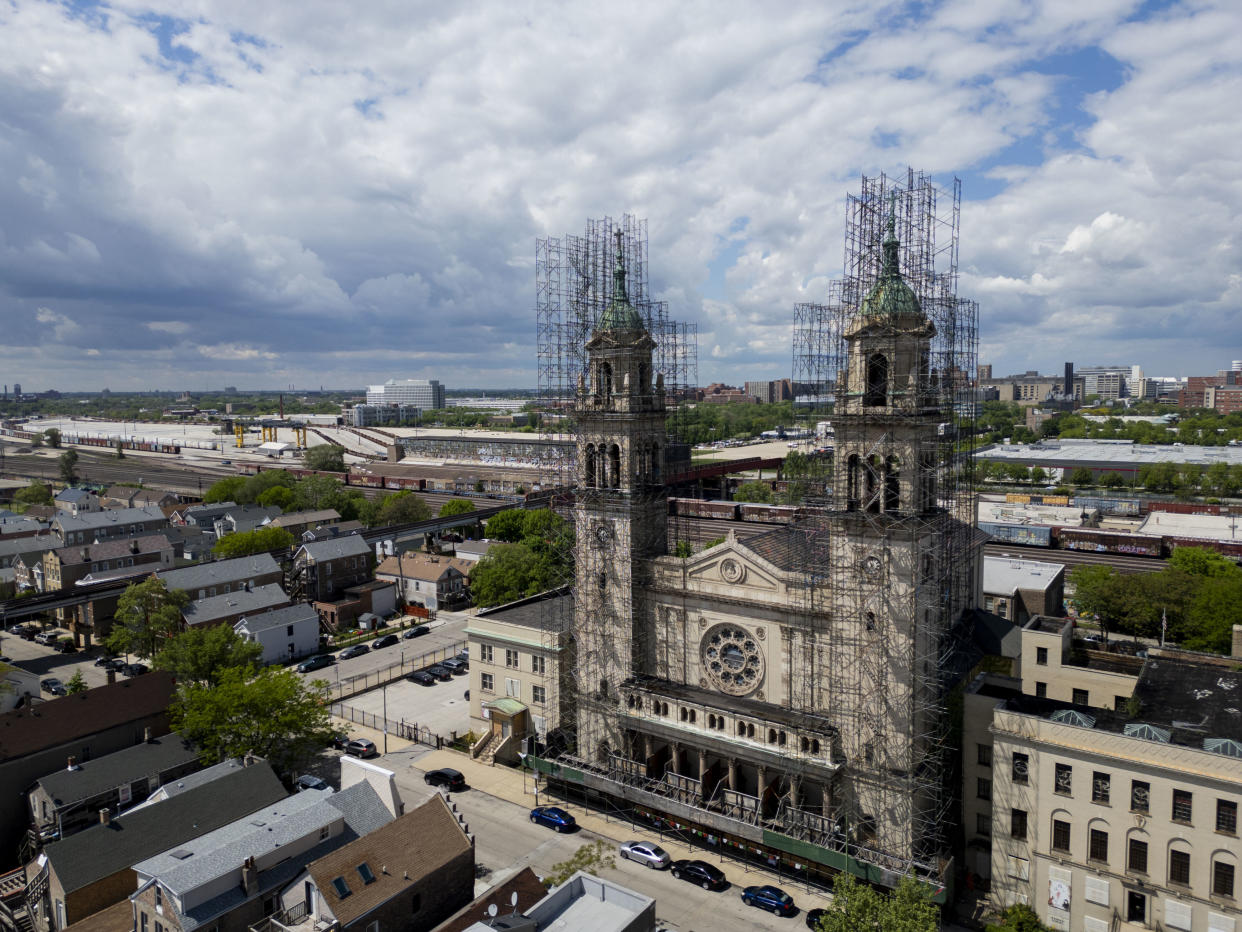Pilsen’s St. Adalbert Church wins landmark recommendation, will face council

Pilsen’s St. Adalbert Church building cleared a key hurdle Thursday in the yearslong fight by former parishioners to have it declared a landmark to spare it from demolition or a complete overhaul.
The Commission on Chicago Landmarks voted unanimously to recommend it get the protection, setting up a final decision next week by the City Council.
The fight over the closed church has pitted Catholic leaders against many former parishioners.
While the Archdiocese of Chicago wants to sell the church building to help fund St. Paul’s Church, which is still operating nearby, former St. Adalbert churchgoers have tried to block the sale with the landmark designation. Many onetime St. Adalbert parishioners hope their former church, closed in 2019, may one day celebrate mass again.
The controversy over the church was not a factor for commissioners, Landmarks Chair Ernest Wong said. The church “met all the criteria,” he said.
“The alderman and the archdiocese have a serious problem on their hands, and they have got to deal with it,” he said. “We as the commission, though, are doing our duty in terms of the structures within the city of Chicago to figure out what is worth preserving and what is not. We are holding by that.”
If approved by the City Council, landmark status would trigger a series of restrictions and landmarks commission reviews of any redevelopment plans in order to protect the church complex’s “significant features” — including its Renaissance Revival facade, as well as a former rectory, convent and school on the half-block plot. Still, a landmark designation would not completely ban renovations and interior changes.
After the vote, Archdiocese general counsel James Geoly promised to “vigorously oppose” the designation as it moves to the City Council. The landmark status could prevent the church from finding a buyer for the site, he added.
“We’re at risk. If this comes out the wrong way, the future ministry in Pilsen is at risk. St. Paul’s is not sustainable if they cannot monetize this asset,” Geoly said.
The church was called “one of the finest in Chicago” by the Tribune when completed in 1914 and, at its peak, served about 4,000 families. But its membership declined as Pilsen shifted from a more heavily Polish community to predominantly Mexican.
Protesters, many of them proudly Polish, have ardently pushed back since the archdiocese shut down the church five years ago. They decried the removal of a statue from the site and led the charge for its landmark status. A 73-year-old woman last year was arrested for trespassing while protesting the removal of stained glass windows and art.
That fervent support was on display again Thursday as supporters and opponents of the landmark status filled the City Council chambers, just as they did during a May hearing.
Former St. Adalbert parishioners highlighted in public comments the importance of the site to Chicago’s Polish community and shared hopes that it could become a Catholic shrine. Ald. Byron Sigcho-Lopez, 25th, again backed their landmarking effort.
Speakers opposed to the designation, many parishioners of St. Paul’s, warned the landmarking designation will make their church unable to sell the St. Adalbert site it now owns and leave it crippled with debt. They criticized as too harsh protests by St. Adalbert supporters, including a man running into St. Paul’s to demonstrate during a mass last week.
The crowd backing the landmark designation shouted its dissent — often in Polish — as archdiocese representatives argued the closure and sale of St. Adalbert is a necessary move to keep Catholic churches afloat in Pilsen amid declining attendance.
“It’s a painful thing for a church to close. But if we did not do it, there would be no church in Pilsen at all,” Geoly said. “The church has the right to make this decision. And public entities and governments should not be used as tools to interfere with these core ecclesiastical decisions.”
The main church building’s facade is now covered in scaffolding while it faces major structural issues. Needed repairs could cost as much as $8 million. The landmark designation would deter demolition, but would not compel rehabilitation.
After the decision, Geoly said the archdiocese has no plans to use the church buildings if the City Council passes the protective status.
“As long as we own it, there will not be a future use of the buildings,” he said. “The parish has been closed. The building is unusable. It is not entirely safe. You wouldn’t go in there without a hardhat.”
The archdiocese tried to turn the church into affordable housing, a museum and an event venue in past redevelopment efforts that would have included repairs to the church building, he said.

